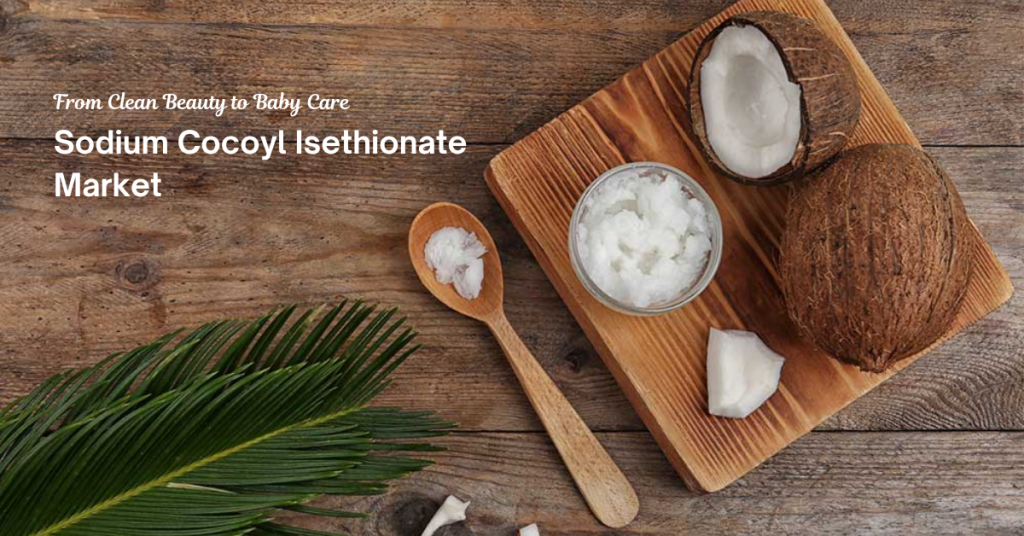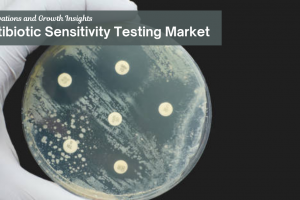
Market Overview
The Sodium Cocoyl Isethionate (SCI) market has emerged as a significant segment within the broader landscape of personal care ingredients. With a valuation of USD 171.22 million in 2018, the market surged to USD 242.76 million in 2024, and is anticipated to reach USD 381.09 million by 2032, growing at a CAGR of 5.80%. This progression reflects rising consumer demand for gentle, plant-derived, and sustainable alternatives to traditional synthetic surfactants.
SCI, derived from coconut fatty acids and isethionic acid, offers high foaming ability, excellent mildness, and compatibility with other surfactants. Its popularity is largely attributed to the global clean beauty revolution, where both brands and consumers are emphasizing minimalism, ingredient safety, and skin compatibility. As a sulfate-free surfactant, SCI provides effective cleansing without stripping natural oils from skin or hair, making it a prime ingredient in solid cleansers, shampoo bars, facial foams, and even toothpaste.
The compound’s environmentally friendly nature adds another layer of appeal. With increasing global regulations on microplastics, petroleum-based ingredients, and non-biodegradable chemicals, SCI’s biodegradable profile aligns well with shifting compliance requirements. Additionally, as solid beauty products gain momentum in reducing packaging waste, SCI has become a go-to base for waterless and bar formulations.
Regionally, markets in Asia Pacific and North America have shown the fastest uptake, while Europe continues to lead in regulatory-driven innovation. Collectively, these trends affirm that Sodium Cocoyl Isethionate is more than a passing phase—it is becoming a foundational component in sustainable beauty and personal care formulations.
Get full details: https://www.credenceresearch.com/report/sodium-cocoyl-isethionate-market
Market Drivers
Booming Solid Cosmetic Product Trends
Solid cosmetics like shampoo bars, face cleanser bars, and body wash bars have gained mainstream traction, particularly among eco-conscious consumers. These products, known for reducing plastic waste and transportation emissions, often rely on SCI for its excellent solid-form performance. Its ability to create dense lather and deliver gentle cleansing without added water content has made it indispensable in solid formulations.
Stringent Global Cosmetic Regulations
Regulatory bodies such as the European Chemicals Agency (ECHA), the U.S. FDA, and ASEAN Cosmetics Directive are driving industry reform by encouraging the use of safer, non-toxic, and biodegradable ingredients. SCI, being sulfate- and paraben-free, naturally fits into these mandates. As brands work to align with global standards, they are increasingly turning to SCI to meet both compliance and performance needs.
Consumer Preference for Skin-Friendly Ingredients
As consumer awareness of ingredient safety grows, so does scrutiny of harsh detergents like SLS and SLES. SCI offers a skin-friendly alternative that reduces irritation, making it ideal for sensitive skin, baby products, and daily-use toiletries. Its pH compatibility with skin, minimal stripping effect, and mild cleansing properties are now seen as baseline requirements for premium personal care brands.
Innovative Branding and Ingredient Marketing
More brands are marketing their formulas based on clean-label ingredients. Featuring terms like “coconut-derived” and “biodegradable” in packaging and advertisements helps position products as natural and safe. SCI’s origin and functional benefits make it an attractive headline ingredient that appeals to both environmentally and health-conscious shoppers.
Market Challenges
Limited Solubility in Water-Based Formulations
While SCI performs excellently in solid and semi-solid formats, it poses challenges in fully water-based or liquid formulations. It is not readily water-soluble and requires specialized processing techniques such as melting, suspending agents, or dispersing in surfactant blends. This limits its versatility in conventional liquid shampoos and facial cleansers.
Inconsistent Global Supply of Coconut Oil
As a coconut-derived product, SCI’s raw material supply is directly influenced by the agricultural dynamics of coconut-producing regions like Southeast Asia. Weather fluctuations, labor shortages, and geopolitical disruptions can affect both quality and pricing of the feedstock, increasing volatility for manufacturers and impacting product cost.
Cost Sensitivity Among Mass Market Brands
SCI is comparatively more expensive than standard sulfates. While premium and mid-range brands readily absorb this cost, mass-market producers often struggle to maintain price competitiveness when formulating with SCI. This limits adoption in low-cost markets and price-sensitive product lines, especially in developing countries.
Lack of Consumer Education
Although SCI is widely used in personal care products, the average consumer remains unaware of its benefits. Unlike more recognizable ingredients like aloe vera or charcoal, SCI’s technical-sounding name offers little emotional or natural appeal. Brands must invest in marketing and education to overcome this communication gap.
Market Opportunity
Expanding Niche Personal Care Categories
Niche segments like waterless skincare, gender-neutral grooming, and baby-centric body care are offering lucrative opportunities for SCI adoption. These segments prioritize product safety, mildness, and low environmental impact—qualities that SCI excels in delivering. Manufacturers can capitalize on these evolving consumer values to carve out differentiated product offerings.
Customization in Formulation Development
Growing interest in custom-made beauty products is encouraging formulators to explore versatile ingredients. SCI’s compatibility with various conditioning agents, essential oils, and active ingredients makes it suitable for personalized products targeting specific hair types or skin conditions. This flexibility increases its value proposition in indie and artisan beauty markets.
Retailer-Led Ingredient Standards
Major retailers like Target, Sephora, and Ulta Beauty are setting internal clean beauty guidelines, banning specific chemicals and encouraging the use of safe alternatives. SCI has passed these standards across multiple retailer frameworks, allowing product manufacturers to gain access to premium shelf space and brand trust through compliance.
Brand Collaborations and Co-Innovation
With rising competition in the clean beauty space, ingredient manufacturers are collaborating directly with personal care brands for co-innovation. By partnering in product design, ingredient suppliers can position SCI not just as an ingredient, but as a cornerstone of the brand story. This collaborative approach boosts brand equity and speeds up go-to-market strategies.
Market Segmentation
By Form Segment
- Powder
- Granule
- Flake
By Application Segment
- Skin Cleansing
- Hair Cleansing
- Baby Care
- Men’s Grooming
- Pet Care
- Oral Care
- Others
By Region
North America
- United States
- Canada
- Mexico
Europe
- Germany
- United Kingdom
- France
- Italy
- Spain
- Poland
- Netherlands
- Rest of Europe
Asia Pacific
- China
- India
- Japan
- South Korea
- Australia
- Southeast Asia
- Rest of Asia Pacific
Latin America
- Brazil
- Argentina
- Chile
- Peru
- Rest of Latin America
Middle East & Africa
- South Africa
- Saudi Arabia
- UAE
- Rest of Middle East and Africa
Regional Analysis
North America
North America remains one of the most mature markets for SCI, driven by early adoption of clean beauty and sulfate-free formulations. The U.S. market leads in consumption, with brands like Drunk Elephant, Native, and The Honest Company pioneering SCI-based formulations. Growth is supported by consumer education and preference for high-performance natural products.
Europe
The European market is driven by stringent chemical safety standards and consumer demand for natural, vegan, and cruelty-free products. Germany, France, and the UK are leading the region in incorporating SCI into bar soaps and facial cleansers. Private label brands and organic supermarkets further contribute to market penetration.
Asia Pacific
Asia Pacific, especially countries like China, South Korea, and India, represents the fastest-growing regional segment. SCI is increasingly used in K-beauty and J-beauty products due to its soft texture and mildness. In India, the rise in Ayurvedic and natural product launches has further accelerated SCI use. Growth is supported by increasing disposable income and urbanization.
Latin America
In Latin America, particularly Brazil, rising environmental awareness is boosting the demand for biodegradable ingredients like SCI. Brazilian beauty brands are integrating SCI into multifunctional personal care products that align with regional preferences for performance and value.
Middle East & Africa
While still an emerging region, MEA shows promise. The demand for high-quality, non-irritating skincare among affluent urban consumers, particularly in GCC countries, is fueling gradual adoption. Natural beauty trends and imported premium brands are introducing SCI into regional consciousness.
Top Companies
- Innospec Inc.
- BASF SE
- Galaxy Surfactants Ltd.
- Taiwan NJC Corporation
- Solvay
- Stepan Company
- Clariant AG
- Croda International
- JRS Pharma
- Jeen International Corporation
Future Outlook
- Bar-based and waterless beauty products will gain more share, increasing SCI usage.
- Clean-label trends will intensify, driving demand for recognizable, plant-based surfactants.
- Customization and indie beauty growth will expand SCI applications.
- Global supply chains will become more resilient through regional raw material sourcing.
- Digital ingredient education campaigns will improve consumer recognition.
- Premium men’s grooming and pet care segments will emerge as new verticals.
- Investment in formulation R&D will lead to better water compatibility of SCI.
- AI-powered formulation engines will optimize SCI inclusion in multicomponent blends.
- Packaging innovations will enhance the appeal of SCI-based products.
- Strategic mergers between raw material suppliers and cosmetic manufacturers will improve scale and reach.
Get full details: https://www.credenceresearch.com/report/sodium-cocoyl-isethionate-market





